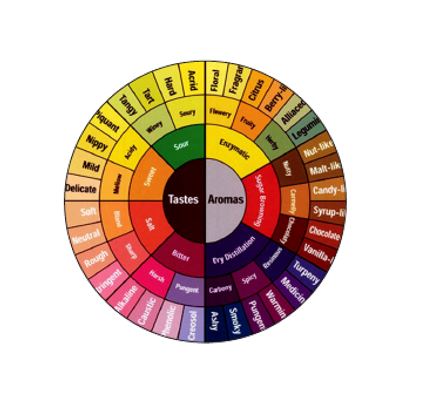Els Van Parys is responsible for the R&D department of Lotus Bakeries. Her team runs mainly three types of projects: development of new products, improvement of our current products in terms of taste, texture and nutrition, and also research projects. We sat down with her ahead of The Amsterdam Coffee Festival to find out more about the unique relationship between coffee and the coffee industry's best loved biscuit.
What is it that gives Lotus Biscuits their unique flavour?
The typical character of a Lotus Biscoff is determined by a number of factors: the sweetness, the mixing of the ingredients and the coming together of different flavours, the shaping of the biscuits, and the baking process, amongst others. When the biscuits are baked, a unique caramelisation occurs, in combination with Maillard reactions. The Maillard reactions arise when proteins and sugars are exposed to heat. The brown crust of a steak in a hot pan is an example of this reaction, or the golden-brown crust of bread baked in a hot oven, for instance. It’s the combination of the caramelisation process and the Maillard reactions, in a unique combination, that give a Lotus Biscoff its specific taste.
What is a tasting note?
Tasting notes are qualitative descriptors for the sensory examination and evaluation of a product.
What is a tasting profile?
A tasting profile includes, next to the descriptors, a scoring of the different attributes that are chosen. For example, for wine typical descriptors are floral, red fruit, wood, etc. When these attributes are scored, you come to a typical tasting profile.
How do we taste? Is it just with our mouth, for instance?
Whether we like the flavour of a product is decided by our nose and mouth, but also by our sight, hearing, and touch. The sound of a crumbling biscuit and the mouthfeel, for instance, also influences whether we like it or not. Our nose, which detects the volatile components of food, takes in the aroma. This typically pleasant smell of a Lotus Biscoff is released under the influence of the temperature in our mouth while mincing the biscuit. The volatile components determine the flavour perception for up to 80%! The sweetness and non-volatile components on the other hand, are detected with our tongue while eating the biscuit.
What are the similarities between tasting Lotus Biscuits and tasting coffee?
An interesting parallel with coffee is that when roasting coffee beans, a similar caramelisation and Maillard reaction appears. This is a significant overlap between the flavour formation process of Lotus Biscoff and coffee.
If we then look at the individual aroma components that can be detected in Lotus Biscoff, for which gas chromatography can be used as a technique to separate the different molecules of a product, it shows that a Lotus Biscoff shares many key aroma components with coffee. Key aroma components are those specific taste elements that truly define the aroma of a product.
What differences, if any, are there?
There are some differences, first of all because of the texture. Of course the crunchiness of the Biscoff adds to the taste experience! And although both coffee as Biscoff are giving a boost of flavour in the mouth, this flavour experience will last longer for the Biscoff.

Why are Lotus Biscuits the perfect partner for coffee?
Having the same key aroma components alone, does not guarantee a perfect match. Also the intensity of flavours is of importance. What distinguishes a Lotus Biscoff from other products often combined with coffee, such as chocolate or vanilla, is that a cup of coffee and a Lotus Biscoff are in perfect balance. Whereas chocolate fully dominates the flavour of coffee, and the taste of a vanilla biscuit almost disappears when combined with coffee, this is not the case with coffee and Lotus Biscoff, where neither overpowers the other. The individual identity of both coffee and Lotus Biscoff remain almost unchanged when consumed together.
How will this be demonstrated at The Amsterdam Coffee Festival?
The relationship between coffee and Lotus Speculoos will be emphasised by serving the coffee in small glasses featured with a Speculoos (crumbled) edge. Furthermore we will demonstrate different specialty coffees, which are combined with Speculoos. For example a Latte Speculocchiato, Speculoos Frappé, Speculoccino and a Speculoos Affegato. We'll also provide recipes of these specialty coffees, so people can try to make these coffee’s by themselves.
Make sure you buy your ticket to The Amsterdam Coffee Festival now to try for yourself! And don't forget to check out the Lotus Speculocchiatio Recipe here.